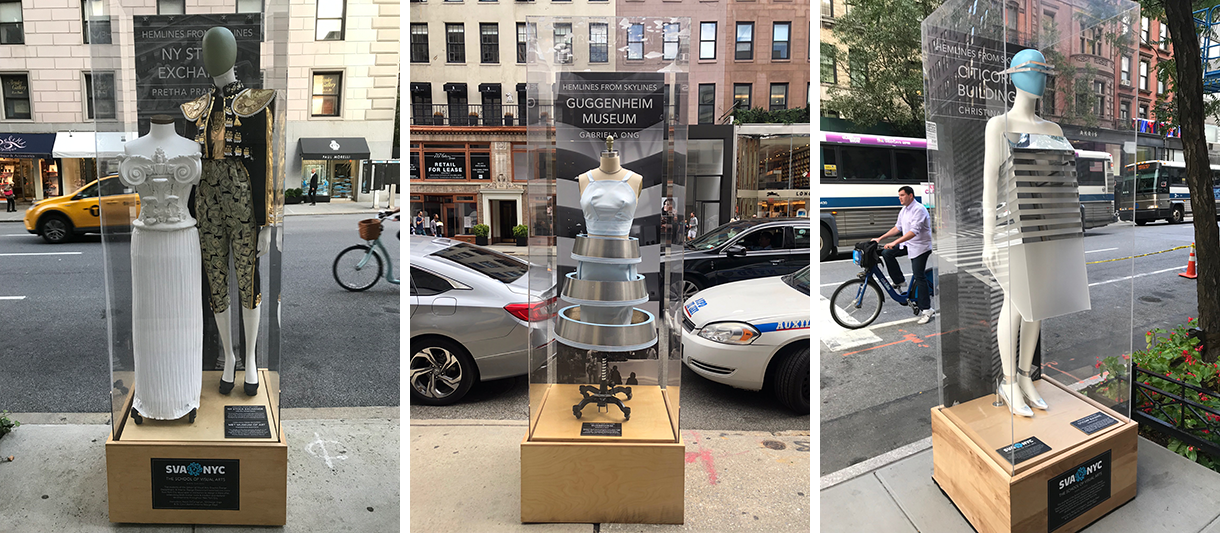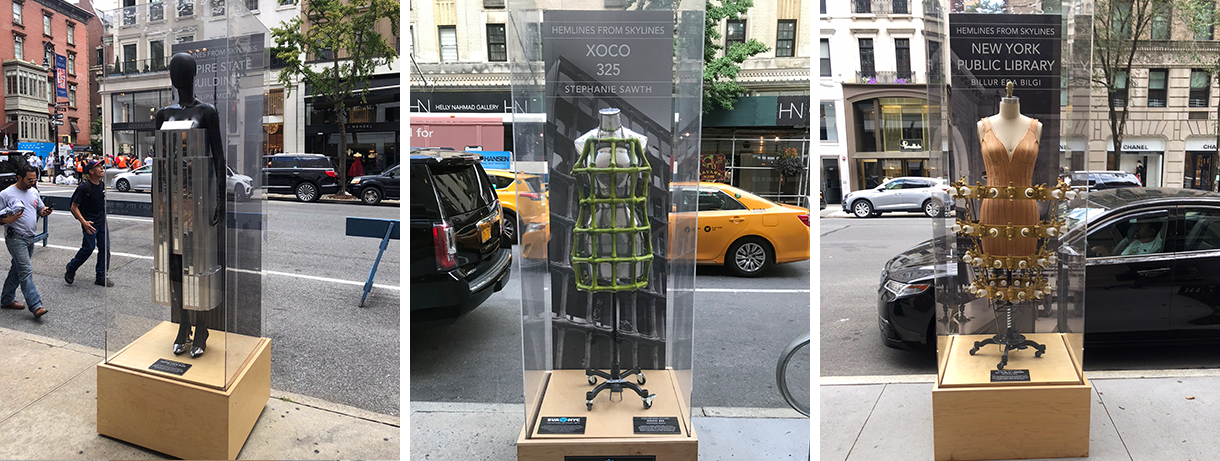
Few things are more impermanent than clothing styles and more permanent than buildings (although architectural styles go up and down with the same relative frequency as hemlines). New York is epicenter of timelessness and timeliness in both realms. This is why Kevin O’Callaghan, the chair of the 3D design program at the School of Visual Arts in New York, has for decades been building exhibitions of repurposed current and obsolete objects — from gas masks to automobiles — that transmute their original functions into innovative things that embody wit, ingenuity, and beauty, and are made entirely by hand too. His most recent transformative exhibit, Hemlines from Skylines: Architectural Fashion, was mounted this September (5-30) in New York in partnership with the School of Visual Arts and the Madison Avenue Business Improvement District, part of “Madison Avenue Salutes Fall Fashion.”

This eclectic public artwork features fashions created by students from SVA’s BFA Design and BFA Interior Design programs. Co-curated by O’Callaghan and BFA Interior Design Chair Dr. Carol Bentel, this is the fifth annual transformation of the sidewalks between East 61st to East 79th Streets (others have included One of a Kind Luxury, dresses made from one object like spoons and forks, Chairs that Inspire, A Moment in Time, giant wrist watches that captured an historical moment, Obsessorize, fashion accessories made from objects from different decades) into virtual galleries with 20 eight-foot tall vitrines, filled with gowns influenced by landmark New York architecture. It was inspired by the storied Beaux-Arts Architects’ ball in 1931, which celebrated the new age of skyscrapers in Manhattan, where architects wore elaborate ensembles inspired by their own iconic structures, such as the Empire State Building and Chrysler Building. This exhibit also includes Radio City Music Hall, the Guggenheim, and Citicorp Center.
The 20 sculptural fashions are inspired by neo-classical, art deco, and mid-century modern eras and incorporating current architectural elements and developments. Each student was influenced by one landmark and organized according to the year when it was constructed. No digital tools or pixels were used. The materials include resin, welded steel and aluminum, rope, grouted tiles, wood, light bulbs, stained glass, crystals, flowers, and more.

For O’Callaghan, who designed the “golden popcorn” statue for the MTV Movie Awards and a giant pair of headphones using Toyotas as the ear pieces, there is nothing that cannot be made from imagination with the proper tools. “If you learn the integrity of materials, you learn what they can and can’t do, and there isn’t any project that you can’t tackle,” he says. The gowns in Hemlines from Skylines prove the point.
